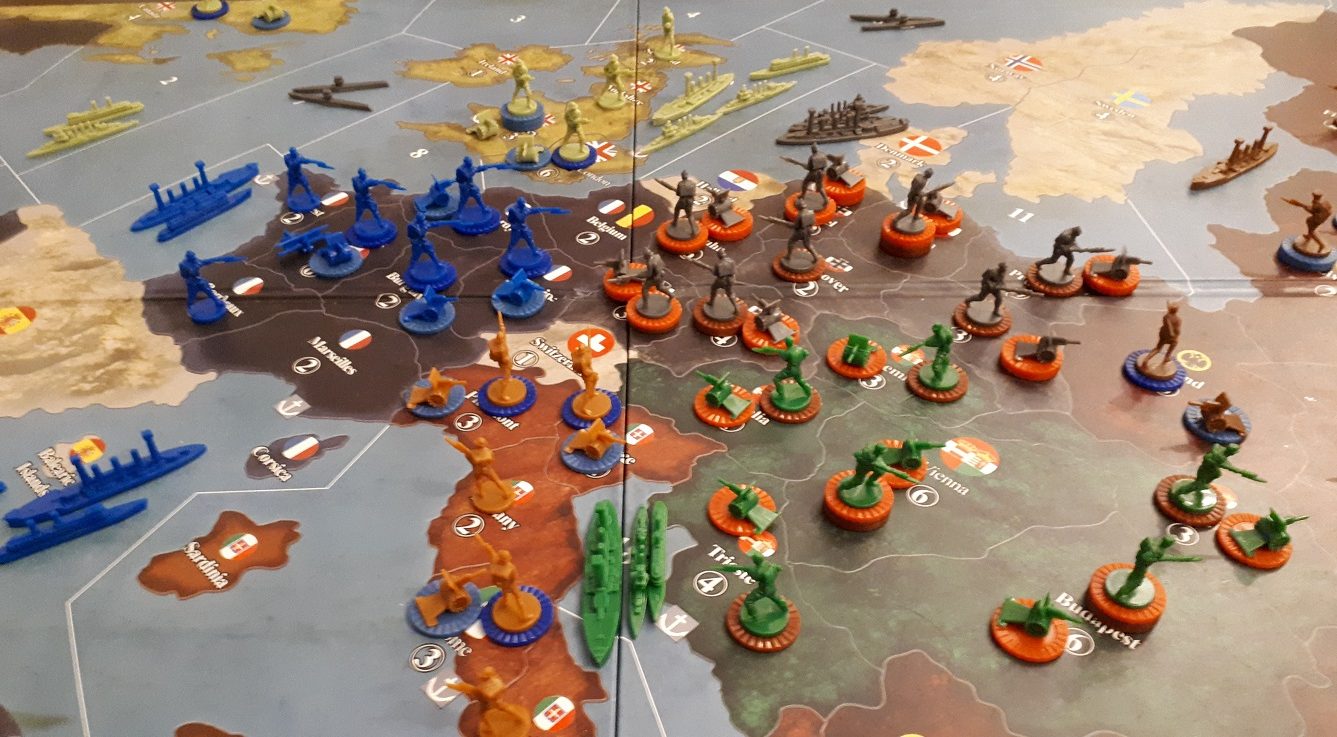It’s easy to make tons of additions to your game. That doesn’t mean it’ll make it better. You need to understand how your game works in order to make changes that you will like – especially if you’re going to spend money. This will allow you to make wise decisions. Here are a few questions you should ask yourself.
Is It Strategy or Tactics ?
There are usually two types of wargames : strategic and tactical. This difference is crucial and you need to make sure you understand it.
Strategy games are ones where you play at the high level. You’re basically the chief of staff and civil ruler of your nation. You have to manage resources to build armies, capture territories to increase your economy. Unit types are usually few. You’re moving the equivalent of hundreds of thousands of men at once. Beating your enemy requires a large scale plan to overcome his armies and steal his resources.
Tactical games are ones where you play at a level much closer to that of a soldier. You’re usually in command of a smaller force on a smaller battlefield. Your job will typicall be to overcome strong points, gain important objectives to break the enemy lines and allow your troops to move around more easily. Unit types are varied, with a large amount of abilities designed for specific tasks that you need to carry. Sometimes, the units you’re given at the beginning are the only ones you’ll ever have. Defeating your enemy implies taking some key positions, or destroying its armies. A simple bunker or a small hill may be the difference between victory and defeat.
As you’re probably guessing now, your changes need to fit within the game type you’re playing. For example, adding extremely specific mechanics in a strategy game will either be pointless or totally overpowered. Conversely, adding resource management to a tactical game that’s all about flanking the enemy and countering with specific abilities will feel clunky and take away from the game’s flavor. It could also kill some aspects of the game you like. Therefore, it’s critical that the changes you make be in line with the kind of game you’re playing.
How Complex Is The Game ?
Each game has its set of mechanics. Some are straightforward and simple. For example, Axis and Allies has fairly simple mechanics : units cost money, units have an attack and defense value and you roll a 6-sided die to determine whether you hit or miss. Other games, such as Colonial Twilight, have complex mechanics, with a ton of play options and rules, which makes for a lot of variations on how you play each round.
It may sound counterintuitive, but I believe that complex games are actually easier to modify, tweak, or add to. That’s because games with simple mechanics have little room for additions without breaking the game. In Axis and Allies, it’s actually quite tricky to add one more unit with a cost, a defense and attack value that doesn’t end up being useless or wrecking everything on the board. The good news is that it doesn’t take a large set of rules to have some space to maneuver. I’ve had good success making changes to A&A 1914 due to units having synergies as a base rule. That little extra gave me all the room I needed.
I would also suggest to be wary of the extremes. A very simple game will be nearly impossible to modify. Conversely, you may not want to add even more complexity to a game where decision making feels like 4D chess every turn (unless, of course, your friends just love busting their brains for every choice they make). In those cases, it’s probably best to just let those games be.
Realism or Gameplay ?
Since many wargames are based on true historical conflicts, you may find that they elicit quite the debate amongst gamers. Some will blame the game for not being accurate to history down to the last detail. Others will complain that too much realism kills the game by making more rigid and basically forcing you to “repeat history”. I doubt that argument will be resolved anytime soon. That being said, whichever direction you happen to lean into will guide your choices. You can look up how different units used to fight and tweak the rules to better reflect their actual roles.
I personally am more inclined towards favoring gameplay. To me, the historical setup gives the atmosphere and the general setting that I will use to play and modify the game, and the goal is to enjoy it fully. Thus, I like to learn about actual units and them implement in a way that approximates their historical role without breaking the game. Doing so ensures a fun tweak while having a basis in reality. Your results may vary, so it’s why you need to ask yourself what your final goal is.
Once you’ve answered all these questions, it’s time to get tweaking !
